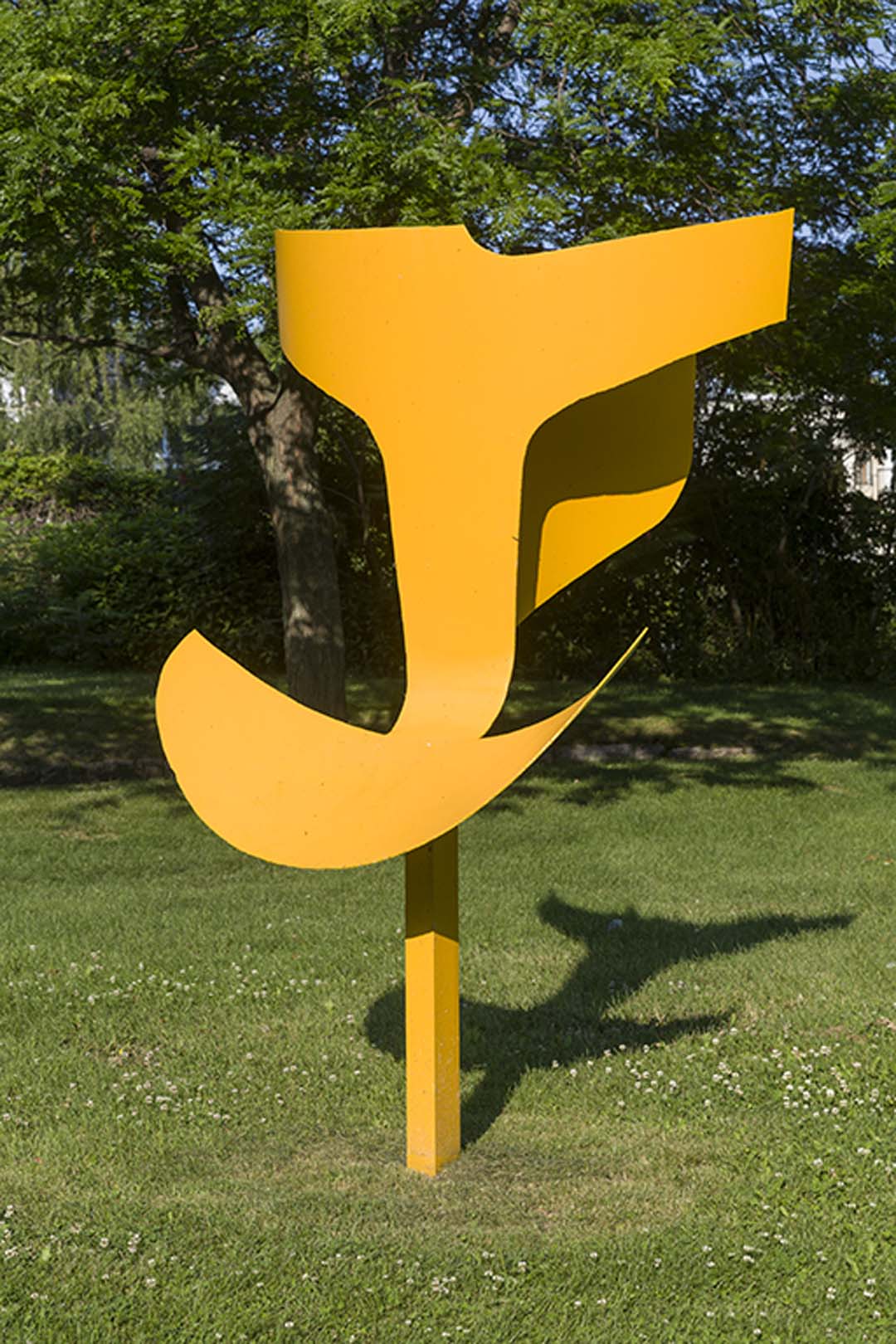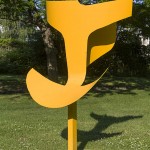

After attending the École d’Arts et Métiers de Valleyfield, Maurice Lemieux (1931–94) produced his first sculptures in the 1950s. He participated in the Madrid Biennale in 1957 and created an imposing wall sculpture for the Séminaire Saint-Jean-Iberville (today CÉGEP Saint-Jean-sur-Richelieu) in 1961. Between 1964 and 1971, he lived in Los Angeles, where he developed a new material that he called “aluminum foam.” In the early 1980s, he created Calcite, a permanent artwork for the De la Savane Métro station in Montréal.

Artwork description
The artwork is on display in the Musée de Lachine’s outdoor exhibition site, which is home to more than 50 monumental sculptures. The sculpture, made of steel painted bright yellow, is composed of five curved elements assembled symmetrically on a stem planted in the ground.
Although abstract, the sculpture evokes a flower in full bloom. Those who knew Lemieux remember him as a lover of nature who was always trying to bring organic forms into his abstract compositions. With this floral theme, the artwork is harmoniously integrated with its presentation site.



